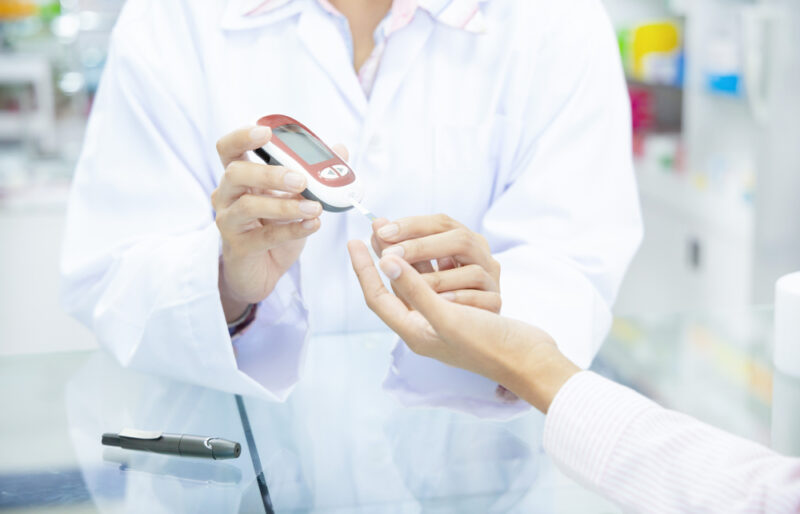Last October, the US Department of Health and Human Services issued guidance that allowed pharmacy technicians to administer Covid-19 vaccinations and pediatric vaccinations to patients age three and older. Though prompted by the coronavirus pandemic, the move is the latest expansion of scope for the pharmacy technician profession.
From communicating with prescribers to performing final product verifications, technicians have the potential to take on more responsibility and lighten the workload for pharmacists.
“Techs are really the heart and soul of the pharmacy,” said Dr. Nicole Ras, a former Walgreens pharmacy manager and a current assistant professor and academic success coordinator at South University School of Pharmacy. In an independent pharmacy where there is often only one pharmacist on duty, taking advantage of techs’ skills is critical to optimizing workflow and running the pharmacy efficiently.
Eager and skilled
“Techs are the first person a patient sees and they are often the ones who have the most contact with our patients,” Ras said. Though many pharmacists would love to do more hands-on patient care, something is always going to pull them away. That’s why it’s so important to have knowledgeable and empowered pharmacy technicians behind the pharmacy counter. “We really have to inspire our technicians and train them on how to have great conversations with patients and on how to become great healthcare professionals.”
Time and time again, studies prove that technicians are skilled and capable, and pharmacists should embrace that in order to use technicians at the top of their license. One study of Iowa community pharmacies found that technicians are just as accurate as pharmacists when performing product verifications, with accuracy rates of over 99 percent. In the nine states where pharmacy technicians are allowed to check fills for other techs, handing off that task can save pharmacists valuable time.
Most pharmacy techs are eager to take on greater responsibility. In a 2017 survey in the journal Research in Social and Administrative Pharmacy, technicians reported that they had positive attitudes about performing administrative and support tasks that help improve patient outcomes, like transferring prescriptions, providing information about medication issues, administering vaccines, and more. Another study from the Journal of the American Pharmacist Association found that when technician roles are expanded to include more patient support tasks like assisting with the administration of medication therapy management, they are more satisfied with their work.
Pharmacists who capitalize on their techs’ excitement about expanded roles can build a more productive workplace. “The profession is changing to be more outcome-driven now instead of just being transactional, and how we work with techs should reflect that,” Ras said.
Focus on patients
One way techs can make a difference in your pharmacy is by having them focus on patient relations. “Technicians can be really instrumental in doing things such as setting up MTM services,” Ras said. Techs can do the bulk of the prep work for programs like this—identifying patients who are eligible, reaching out to them, explaining what the program is, and scheduling sessions. “The pharmacist has to conduct the session, of course, but they don’t necessarily have to be the one setting it up.”
Having pharmacy techs do outreach for pharmacy programs, like signing patients up for automatic refill programs or talking to patients about what kind of services they might benefit from, is one way techs can help to improve patient outcomes. She also recommends using technicians to educate patients about the pharmacy’s electronic options, whether helping them download your pharmacy app or walking them through how to refill a prescription online. These non-clinical forms of assistance can lead to positive outcomes like increased medication adherence.
In addition to performing the legwork to connect patients with pharmacy services, Ras says that friendly, helpful techs at the pharmacy counter can help to build lasting ties with the community. “Being that smiling person patients see when they come in and building relationships with patients is one of the reasons why patients come back and fill their prescriptions,” she said.
While pharmacy technicians can take on many patient-facing responsibilities, there are still tasks only pharmacists can perform. Techs can answer logistical questions about enrolling in a program, for example, but they can’t offer any counseling or clinical advice. “Any time a patient has a question of a clinical nature, that needs to be handed over to the pharmacist,” Ras said.
Ras also recommends that pharmacists take over any time a situation with a patient starts to get uncomfortable or touchy, even if it doesn’t cross that clinical line. “I don’t think that technicians need to deal with patients who are difficult to handle,” she explained. “Pharmacists have a lot more training to deal with those issues.”
Set techs up for success
The list of tasks technicians can perform keeps getting longer, and pharmacists can do a few things to help them practice at the top of their skillset. “First, you have to trust them,” Ras said. “And second, you have to make sure they are up to date on all their training and that you’re able to supervise them correctly.”
But supervision doesn’t mean micromanagement. “They need to have some autonomy,” Ras said. “You don’t need to have a line of sight on everyone, but you should be in earshot.” Set your pharmacy up so that if a tech runs into trouble with a patient or is asked questions they shouldn’t answer, you can overhear and quickly step in. Check in with techs a few times throughout their shift to gauge their comfort level with their work and let them know you’re available if they have issues or questions.
Enabling techs to operate at a high level also means cross-training your staff so every employee is able to rotate through different positions, whether that’s manning the cash register or stocking the shelves. “This is the approach that I have always liked to take,” Ras said.
From the Magazine
This article was published in our quarterly print magazine, which covers relevant topics in greater depth featuring leading experts in the industry. Subscribe to receive the quarterly print issue in your mailbox. All registered independent pharmacies in the U.S. are eligible to receive a free subscription.
More articles from the June 2021 issue:
- Are independent pharmacies missing out on the fastest-growing segment of the pharmacy market?
- Why this pharmacy network only buys from one secondary wholesaler
- These are the front-end shoppers every pharmacy should know
- Five overlooked human resource issues for pharmacies (from an employment law attorney)
- How to increase OTC sales in an age of drive-thru and delivery
- Why pharmacies must offer mobile payment options
- How to make the most of your pharmacy technicians
- Principles for an effective pharmacy budget
An Independently Owned Organization Serving Independent Pharmacies
PBA Health is dedicated to helping independent pharmacies reach their full potential on the buy side of their business. The member-owned company serves independent pharmacies with group purchasing services, expert contract negotiations, proprietary purchasing tools, distribution services, and more.
An HDA member, PBA Health operates its own NABP-accredited (formerly VAWD) warehouse with more than 6,000 SKUs, including brands, generics, narcotics CII-CV, cold-storage products, and over-the-counter (OTC) products.
Want more pharmacy business tips and advice? Sign up for our e-newsletter.












